Have you ever visited Alabama during the fall? During the fall, Alabama experiences changes that can leave your jaw on the floor. This lovely southern state has some of the most vibrant and beautiful fall foliage in the country. You can enjoy a lot of the state’s natural beauty during the fall cool months while visiting state and local parks. But, when do leaves change? When is the best time to travel to Alabama to admire the season’s dramatic changes? Follow along to discover when leaves change color in Alabama and 11 beautiful places to see this!
When do Leaves Change Color in Alabama?
Leaves start changing color in Alabama during early to mid-October, or as early as late September. You should start seeing some color changes in September, mostly in northern Alabama. The range of when exactly leaves change color in Alabama though depends on the region and the year. The peak changes every year, although it’s usually in October. Throughout the state, you can see patches of yellow, orange, red, and pink during October and November, although the leaves start falling and dying by mid-November. Not all trees though change color. Trees that change color in this state include oaks, maples, poplars, and hickory trees.
11 Beautiful Places to See Fall Foliage in Alabama
Now that we know when leaves change color in Alabama, we can dive into the list of the best places to see these dramatic color changes. Listed below are 11 beautiful places to see fall foliage in Alabama.
1. Oak Mountain State Park
One of the best places to see fall foliage in the state is Oak Mountain State Park. This lovely state park is located in Pelham. It was established in 1927 and sits on about 9,940 acres of land. Not only can you admire the golden and beautiful falling leaves, but also participate in many activities. Oak Mountain State Park is a great state park to fish, hike, camp, and horseback ride. The park also features a neat little swimming beach with paddleboard rentals and a shaded picnic area. The best way to see the fall leaves is by taking a hike through the state park. By hiking, you can reach the scenic Peavine Falls. You can also take a hiking trail along Double Oak Lake. It runs for about 2.3 miles. If you want to take a break from outside, you can also visit the Alabama Wildlife Center.
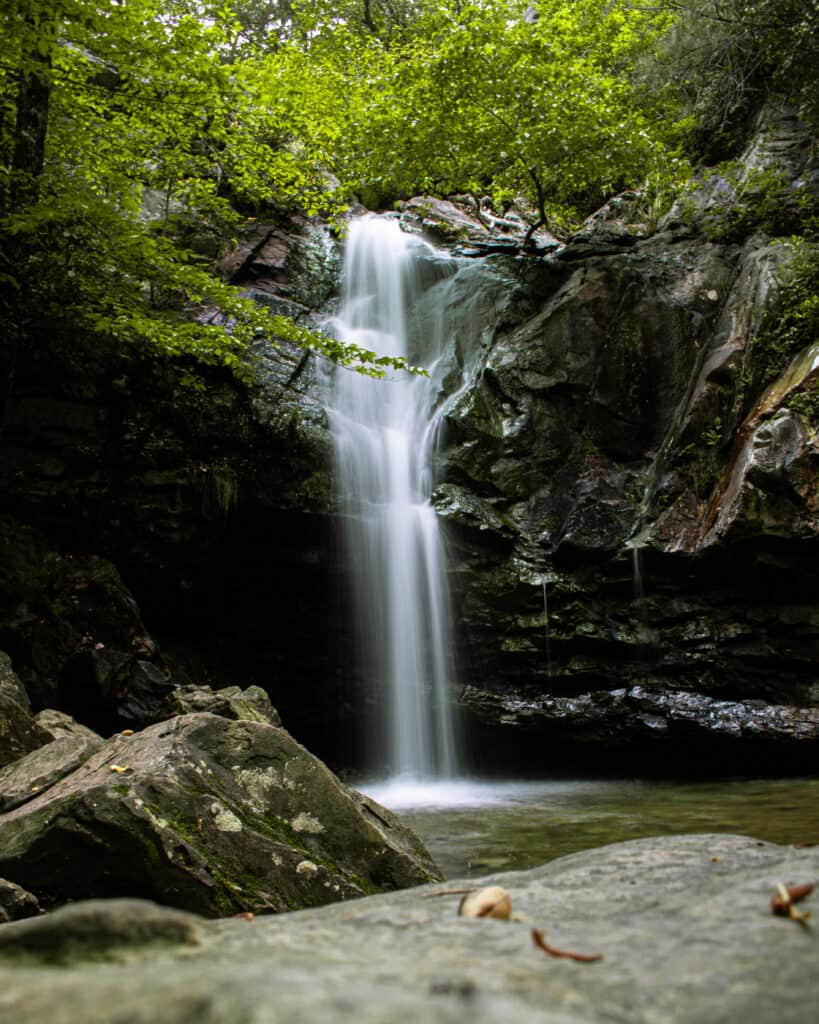
Oak Mountain State Park is home to miles of beautiful hiking trails.
©Cornelius Hayes/Shutterstock.com
2. DeSoto State Park
Another stunning place to see and enjoy the fall weather in Alabama is DeSoto State Park. This 3,502-acre state park is in both Cherokee and DeKalb Counties. It was established in 1935 as State Park No. 5. This stunning state park receives many visitors every year. The most visited part of the park is the sparkling DeSoto Falls which stands at about 104 feet tall. This state park is a perfect place for nature lovers. Imagine kayaking through the state park and watching the golden and orange leaves fall around you. For gorgeous fall colors, the best trails to hike are the Talmadge Butler Boardwalk Trail, Never Neverland Trail, Unfinished Bridge Trail, and Silver Trail. If you’re looking to camp or spend time around this state park, be sure to plan quickly as the park is very busy during fall.
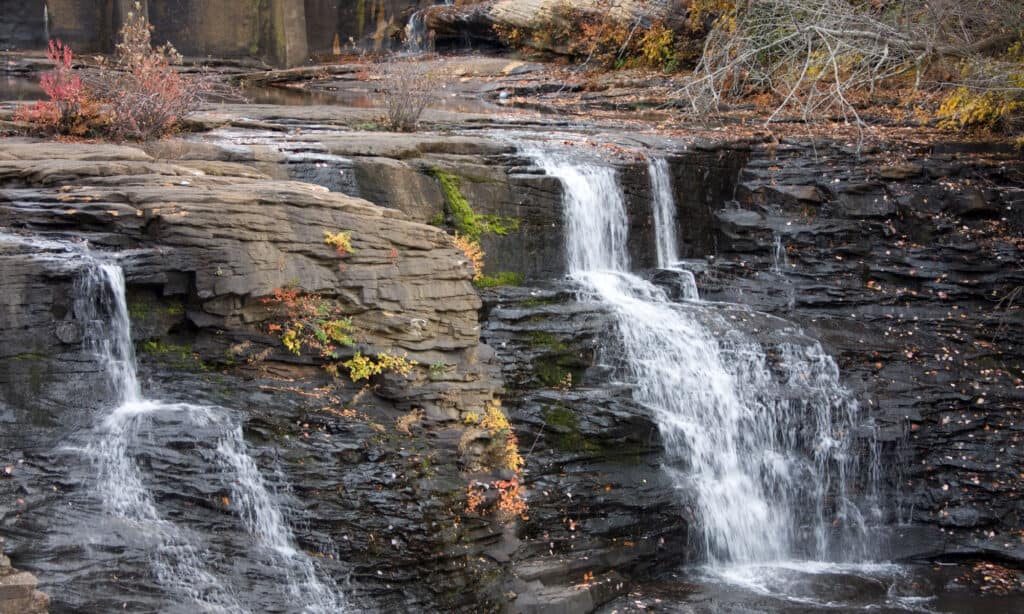
DeSoto State Park is home to the DeSoto Falls.
©iStock.com/chloetru
3. Cheaha State Park
As you can imagine, many state parks have made it on our list. The next one is Cheaha State Park in Clay and Cleburne Counties. The park was established in 1933 and has a surface area of 2,799 acres. Within this state park, you can find the highest natural point in Alabama, Cheaha Mountain, which stands at an elevation of 2,413 feet. Cheaha State Park is a great place to see colorful autumn leaves in the state and fall-blooming wildflowers. While here, visitors can hike, picnic, swim, fish, bike, camp, and learn. Within the state park are the C.C.C. Museum and Walter Farr Native American Relic Museum. Did you know you don’t have to leave the comfort of your car to view the intense fall colors in this state park? You can also take the self-guided Civilian Conservation Corps driving tour.
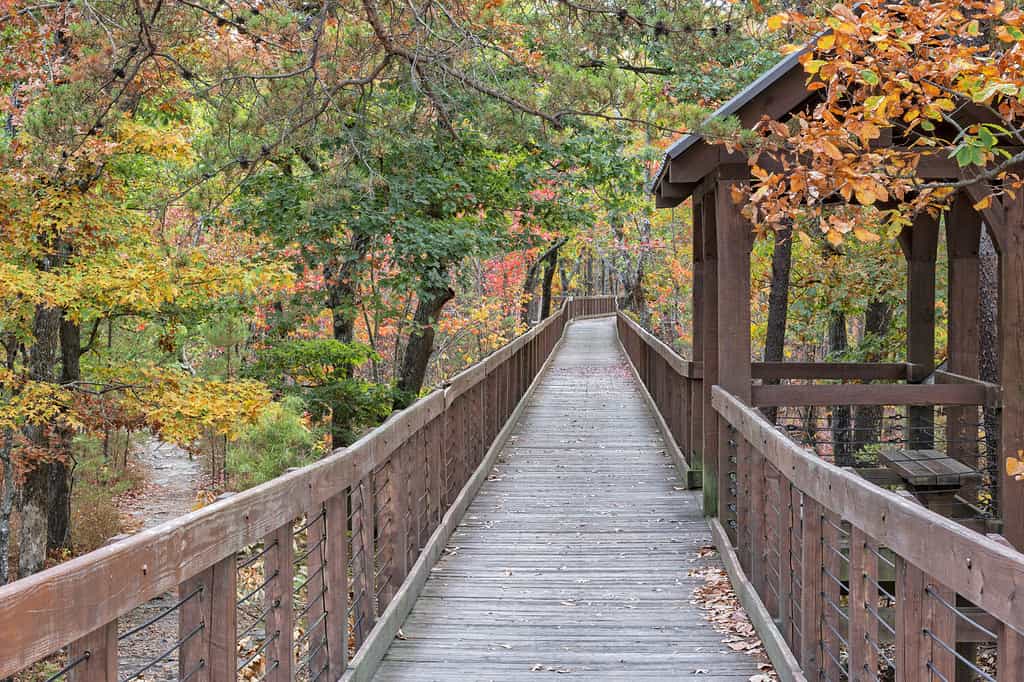
Cheaha State Park has many hiking trails ranging in length and difficulty.
©Jim Vallee/Shutterstock.com
4. Bankhead National Forest
Bankhead National Forest also makes our list of the best places to visit when leaves change color in Alabama. This national forest is within Lawrence, Winston, and Franklin Counties. It’s home to a National Wild and Scenic River, the Sipsey Fork, the only one in Alabama. This stunning national forest was established on January 15, 1918. The surface area of the forest is 181,230 acres. This forest is well worth a visit, for history and nature lovers. Fall is the best time to visit as the weather is cool and calm. While here, visitors can view petroglyphs, prehistoric drawings, waterfalls, rock carvings, and steady streams. Some animals you can find in this national forest are white-tailed deer, American black bears, black warrior waterdogs, turkey vultures, and northern cardinals.

Bankhead National Forest is home to many different animals.
©David7/Shutterstock.com
5. Chewacla State Park
You can also see Alabama’s fall foliage in Chewacla State Park in Lee County. This 696-acre state park was established in 1939. Most people visit this gorgeous state park for the 26-acre Lake Chewacla, which offers swimming, fishing, and boating opportunities. Also in the park are many long trails for hiking, biking, and mountain biking. Some fish you can find in the lake include largemouth bass, sunfish, catfish, and crappie. Camping is also a popular activity. You can choose from primitive camping with tents to cabins or glamping safari tents.
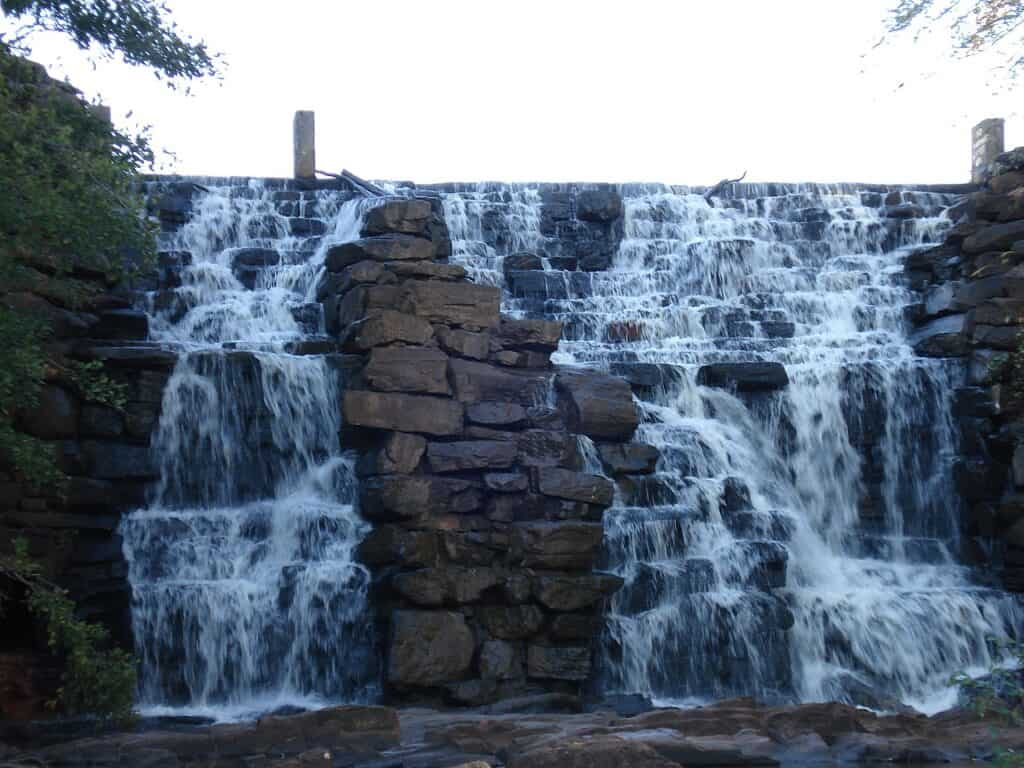
A popular state park to visit when leaves change color in Alabama is Chewacla State Park.
6. Buck’s Pocket State Park
Another place in this southern state to view intense and lovely fall foliage is Buck’s Pocket State Park. This state park is on Sand Mountain in the northeast corner of the state. It was established as a state park in 1971, making it one of the newer state parks. This state park has a surface area of 2,000 acres and is within DeKalb, Jackson, and Marshall Counties. For a few years, the park was closed. However, Buck’s Pocket State Park reopened in 2020. While visiting, you can enjoy the scenic views while hiking the 10 miles of trails offered. Birds that you can find in the state park include northern flickers, red-bellied woodpeckers, great horned owls, mourning doves, and great egrets.
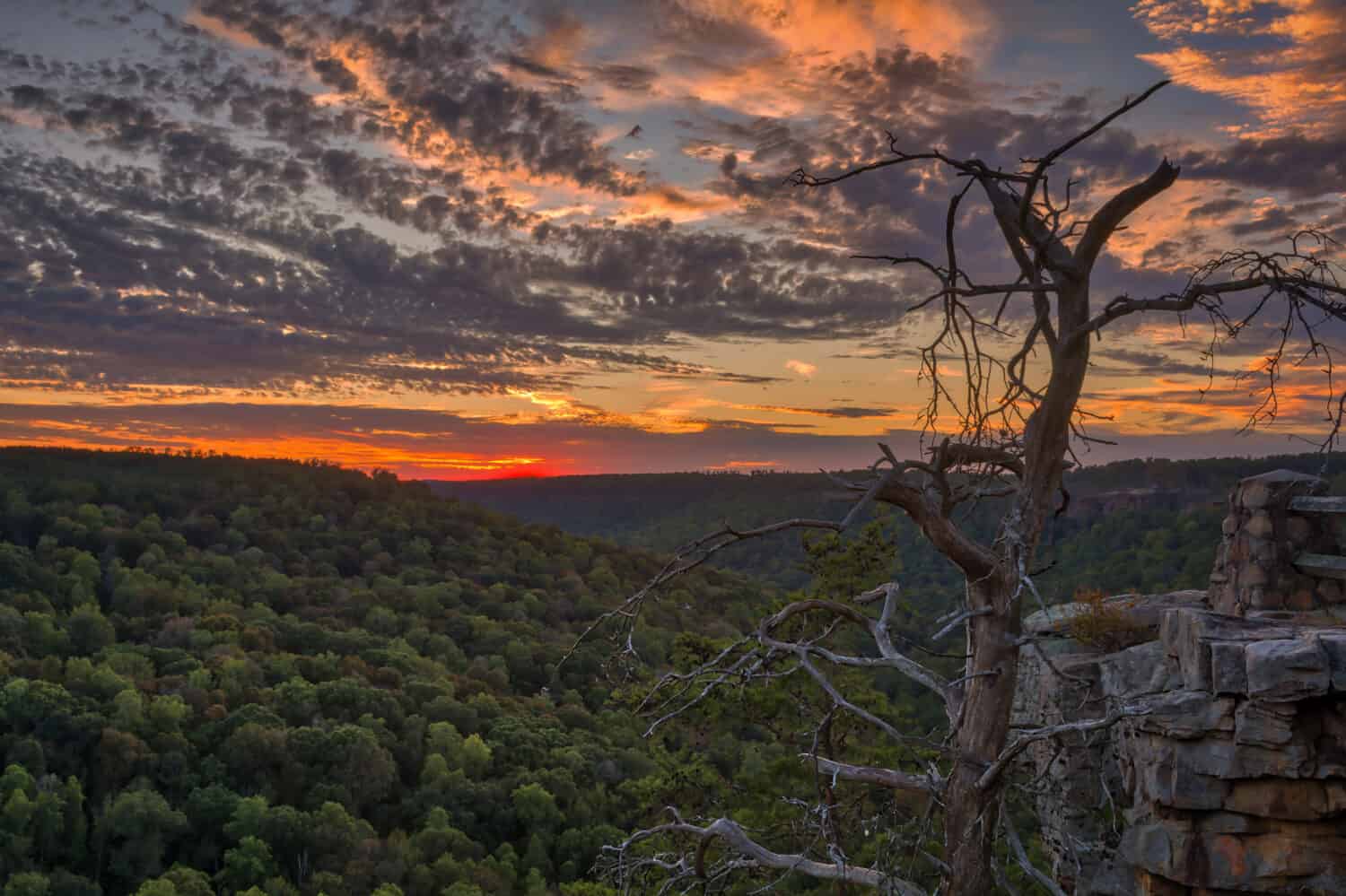
Buck’s Pocket State Park has a surface area of 2,000 acres and is within DeKalb, Jackson, and Marshall Counties.
©James Deitsch/Shutterstock.com
7. Monte Sano State Park
Monte Sano State Park is another state park to make it on our list of the best places to visit when leaves change color in Alabama. This 2,140-acre state park is in Madison County. One of the most popular places to visit within the park is the Dry Falls. The state park was established in 1938. This state park has been on the Alabama Register of Landmarks and Heritage since June 19, 1996. Monte Sano State Park is a great place to go if you’re looking to get away and enjoy nature. While here, you can visit the Civilian Conservation Corps Museum & Memorial and the North Alabama Japanese Garden. Interestingly, the North Alabama Japanese Garden was first started as a hobby by Mr. Robert Black. Many people visit this lovely garden to bird watch. During fall, you can see the Japanese Maples change colors and the chrysanthemums blossom.
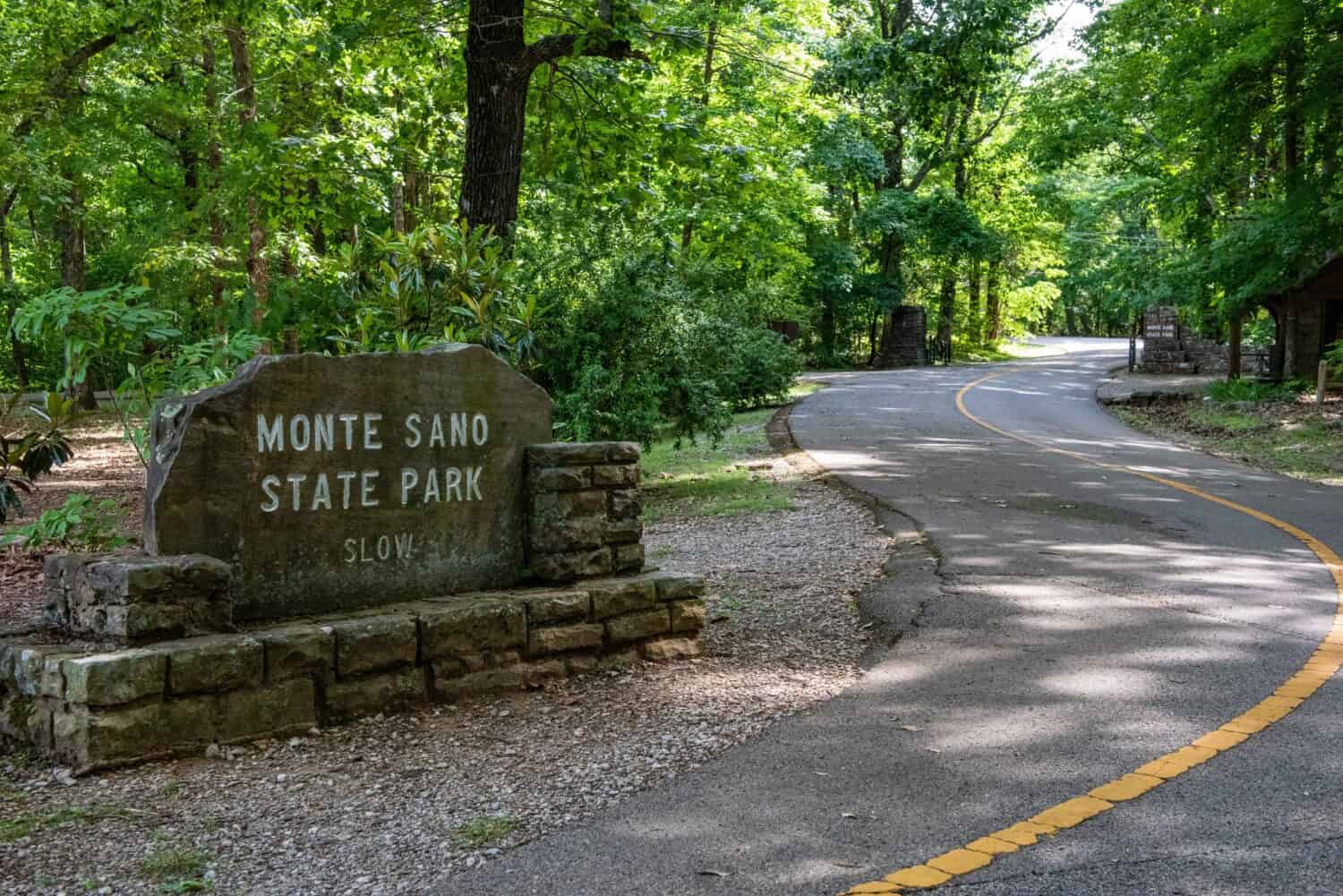
Monte Sano State Park has a surface area of 2,140 acres.
©William C Bunce/Shutterstock.com
8. Little River Canyon National Preserve
Little River Canyon National Preserve, near DeSoto State Park, was established on October 21, 1992. This lovely preserve receives nearly 500,000 visitors every year. Little River Canyon National Reserve is a popular hiking and wildlife viewing spot in the fall. Most people come to marvel at the Little River Canyon, historically called “May’s Gulf”. This lovely river is mostly atop Lookout Mountain. To learn more about this area, you can go to the Jacksonville State University Little River Canyon Center. The educational center opened in 2009. Although more popular during spring and summer, this national preserve is also home to the Blue Hole, a lovely and clear swimming hole on a calm stretch of Little River. You don’t have to leave the comfort of your car though to admire the changing leaves. You can also take a drive along the Little River Canyon Rim Parkway.
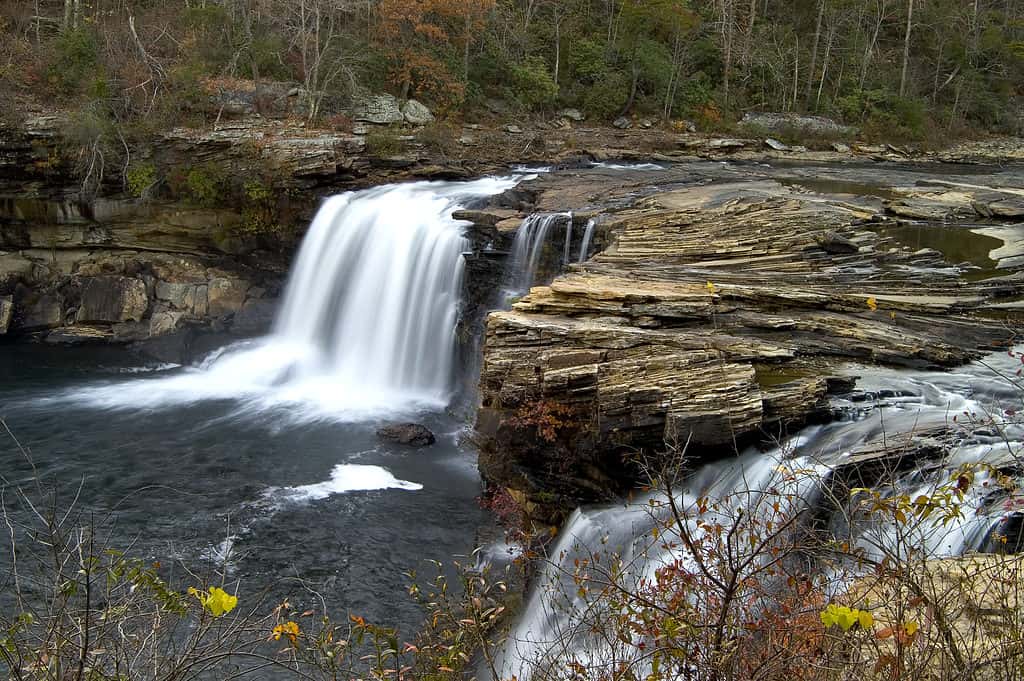
Little River Canyon National Preserve was established on October 21, 1992, and receives nearly 500,000 visitors every year.
©iStock.com/perkijl
9. Alabama Highway 281
Sometimes, you just want to drive, not hike, bike, or camp to view stunning changing leaves. Well, luckily, you can drive on Alabama Highway 281 to view these lovely autumn changes. This scenic driving spot is also called the Talladega Scenic Drive. The highway is about 26.834 miles long. The south end of the highway is the Talladega National Forest near Mount Cheaha State Park. Many visitors use this magnificent highway to reach Talladega National Forest. This nearly 400,000-acre forest was established on July 17, 1936.
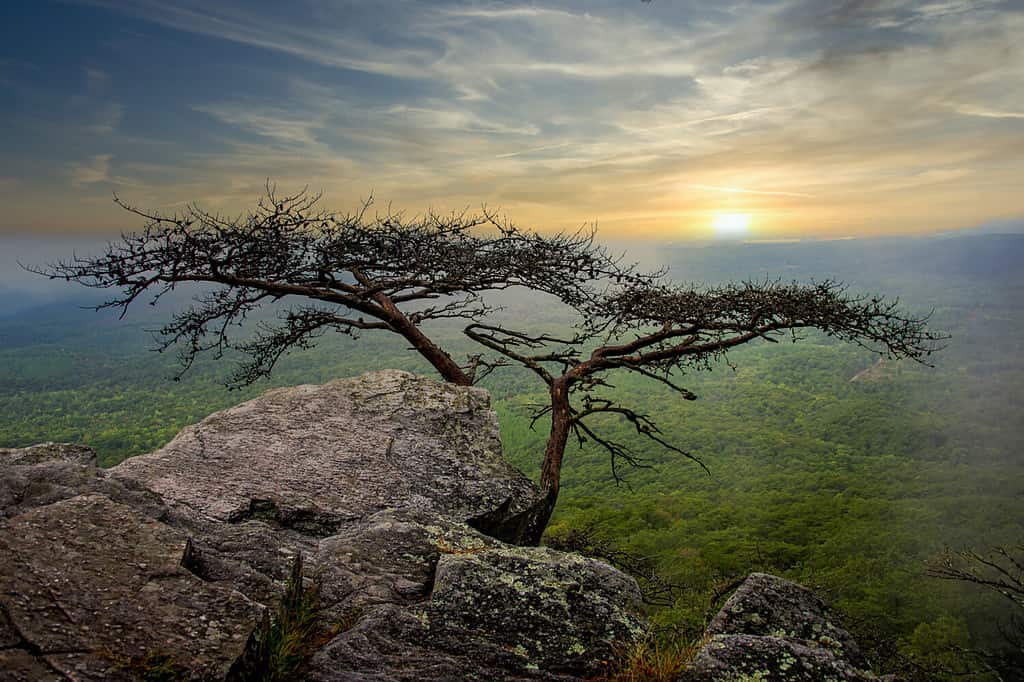
Talladega National Forest is nearly 400,000 acres.
©Sharon Davies Photography/Shutterstock.com
10. The Covered Bridges Of Blount County
Imagine peaking through an old wooden covered bridge and seeing colorful red, orange, pink, and yellow leaves on the other side. This is exactly what you can see while visiting the Covered Bridges Of Blount County in Alabama. These popular covered bridges are perfect to go to when planning a road trip throughout the state. There are three historic covered bridges you can see. One of the most popular covered bridges in Blount County is the Horton Mill Covered Bridge. It spans the Calvert Prong of the Little Warrior River. This historic bridge was built in 1934. It’s 220 feet long and 10 feet wide. The load limit is three short tons. This unique covered bridge has been on the National Register of Historic Places since December 29, 1970. Currently, this bridge is openly open to pedestrians, not cars as there are safety concerns.
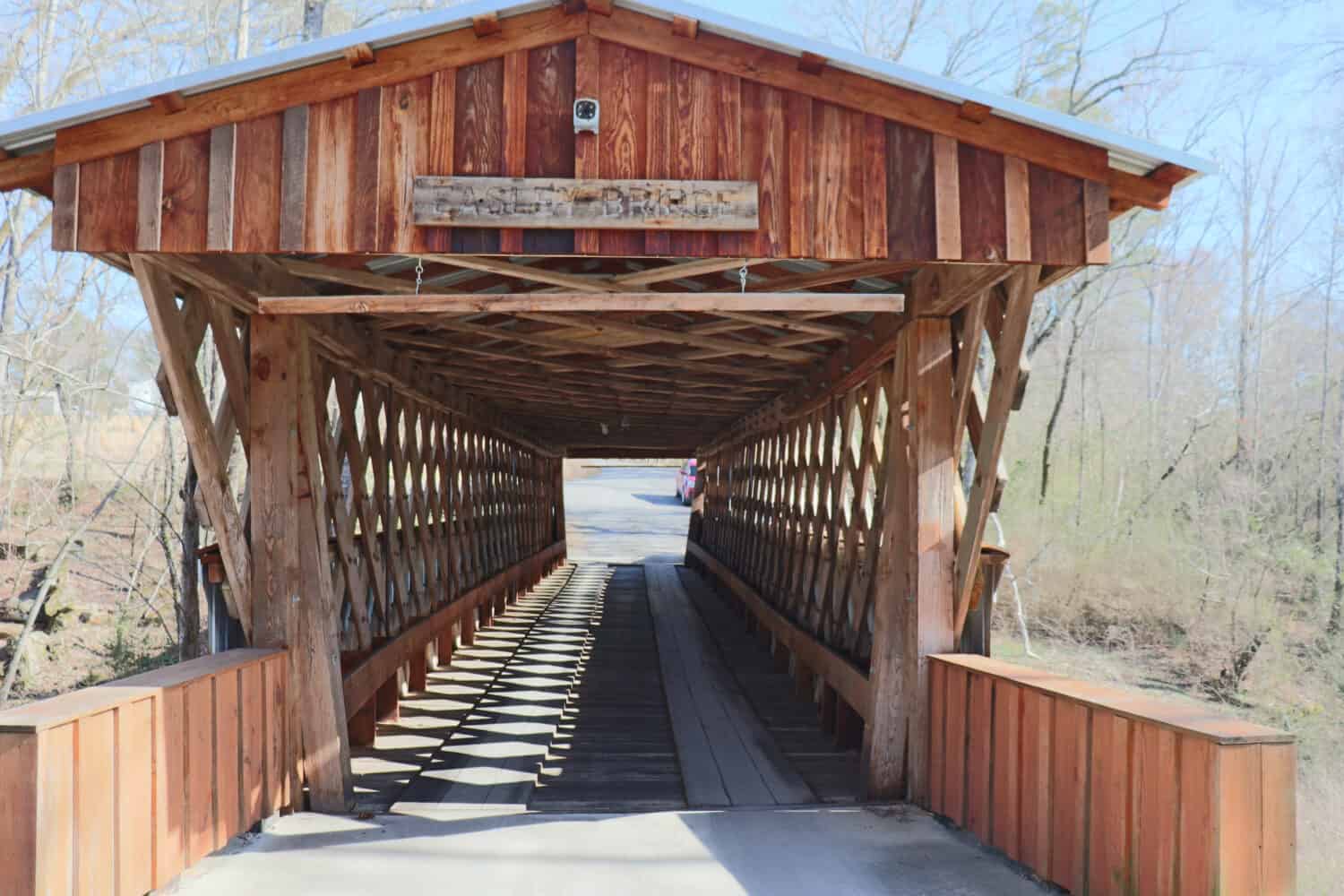
One of the Covered Bridges of Blount County is the Easley Covered Bridge.
©Randy Lassetter/Shutterstock.com
11. Lake Guntersville State Park
Last but not least is Lake Guntersville State Park in Guntersville, Alabama. The surface area of this state park is 5,909 acres. The state park is named after Guntersville Lake, also known as Lake Guntersville. It sits on the eastern shore of the lake. This place is excellent for hiking, swimming, and fishing during the fall. Although it might feel too cold to swim depending on your preferences. The state park features over 36 miles of multi-use trails throughout the park. Mountain biking is a popular activity to do.

Lake Guntersville State Park has a surface area of 5,909 acres.
©Dharris324/Shutterstock.com
The photo featured at the top of this post is © Smileus/ via Getty Images
Thank you for reading! Have some feedback for us? Contact the AZ Animals editorial team.







